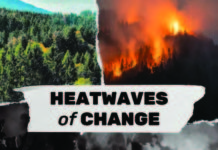Winter in Colorado spans from the months of November to early April.
The months are characterized by cold and snow. In recent years, Colorado has unfortunately seen less snow. This has contributed to the drought.
“There’s different kinds of drought metrics, there’s near-term drought and there’s long-term drought as well. One good storm or one good winter won’t always get us out of a drought and that’s probably what we’re facing here this year,” Natural Resources and Conservation Services’ Colorado Snow Survey Supervisor Brian Domonkos said.
Domonkos described how snowpack is measured based on a median. When percentages are used to describe snowpack, it is in relation to the normal amount of snow that Colorado gets.
Snowpack is currently at 108% according to Domonkos. This is the equivalent of about an inch above the median.
“If I was to choose an ideal number for percent of median snowpack that we would have statewide, it would probably be about 130% of normal, maybe a little bit more,” Domonkos said.
While snowpack is a main source of water, it could have negative effects if there is too much snowpack. Avalanches can occur when snowpack is excessive.
Domonkos cited the Grizzly Creek fire as one example. The runoff from large amounts of snow could cause mudslides because of the burn scars. He also stated that large snowpack is not the only driving factor of these incidents as “even if you had 80% of normal snowpack, there’s always the potential for mudslides and other kinds of flooding.”
Grand Junction does not see as many mudslides because of its position in the desert. As one of the drier areas of the state of Colorado, the city does not see as much snow but is still heavily affected by runoff rates.




